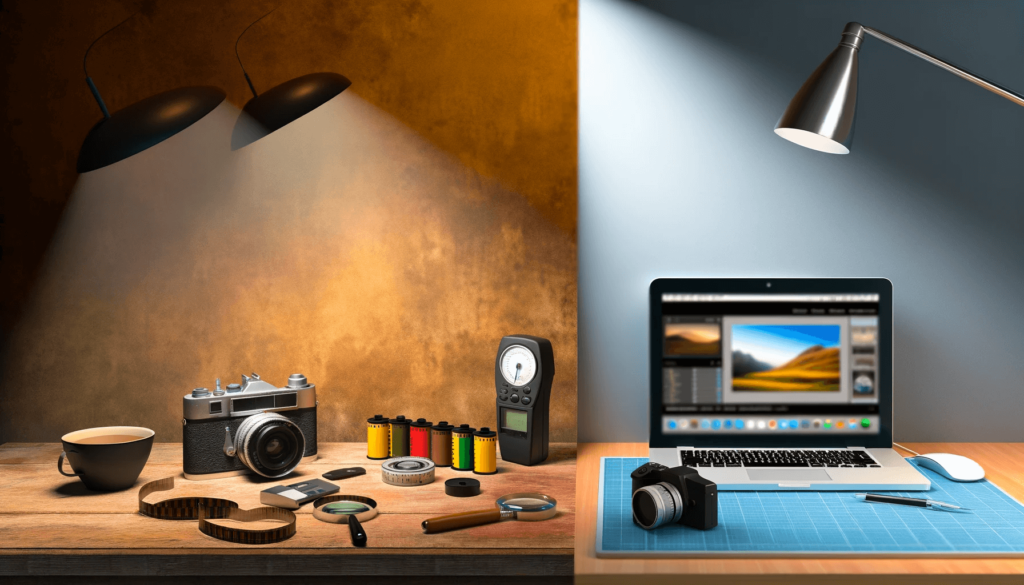
Have you ever stopped to wonder about the difference between traditional photography and digital photography? Well, you’re not alone! At its core, the main difference is how the images are captured and stored. Traditional photography uses film to capture images, while digital photography uses electronic sensors. But let’s dive deeper and make this comparison as clear as a perfect summer day!
This article is designed for enthusiasts and professionals alike who are navigating the nuances between traditional photography and its digital counterpart.
Contents
Key Takeaways:
- Traditional photography captures images on film, while digital photography uses electronic sensors.
- Digital photography offers instant gratification with immediate image viewing.
- Film photography provides a unique, organic quality to photos.
- The choice between the two often boils down to personal preference and the intended use of the images.
The Old-School Charm of Traditional Photography
Let’s start with traditional photography, which is like the grandparent of the photography world. It’s all about capturing light on a piece of film. When the film is developed in a darkroom, the magic happens, and an image appears! It’s a bit like baking a cake – you mix the ingredients (light and film), put it in the oven (darkroom), and voila, you have your picture-cake!
One of the cool things about traditional photography is the anticipation. You don’t get to see your photos right away, which can be exciting (or nerve-wracking if you’re unsure about your photography skills). Plus, film photos have a certain look that digital photos can’t quite replicate. It’s like the difference between getting a handwritten letter and an email. Both do the job, but one feels a bit more special.
The Digital Age: Snap, View, Repeat
Now, let’s talk about digital photography. If traditional photography is the grandparent, digital photography is the tech-savvy kid. With digital cameras, images are captured by a sensor and stored on a memory card. This is super convenient because you can see your photos right away on the camera’s screen. It’s like texting – quick and easy!
Digital photography also allows for a lot of flexibility. Made a mistake? No problem, just delete it and try again. And you can take hundreds or even thousands of photos without worrying about running out of film. Plus, sharing photos is a breeze. Just connect your camera to a computer or phone, and you can send your pictures around the world in seconds.
Which One Should You Choose?
So, which is better? It’s like asking if pizza is better than ice cream. They’re just different! Some people love the hands-on process and unique look of film photography. Others prefer the convenience and flexibility of digital photography. It really depends on what you like and what you want to do with your photos.
If you’re still unsure, here’s a simple comparison to help you out:
| Aspect | Traditional Photography | Digital Photography |
|---|---|---|
| Image Capture | On film | On electronic sensors |
| Viewing Images | After development | Immediately |
| Editing | Limited to darkroom techniques | Extensive digital editing options |
| Cost | Cost of film and developing | Mostly upfront cost of the camera and memory |
| Sharing | Physically | Digitally, via internet |
A Picture-Perfect Conclusion
At the end of the day, both traditional and digital photography have their own charm. It’s like choosing between riding a bike and driving a car. Both can get you where you want to go, but the experience is different. Whether you like the nostalgic feel of film or the convenience of digital, the most important thing is to have fun and capture the moments that matter to you.
So, grab a camera, any camera, and start snapping. Who knows, you might just capture a moment that becomes a cherished memory for years to come. Happy photographing!